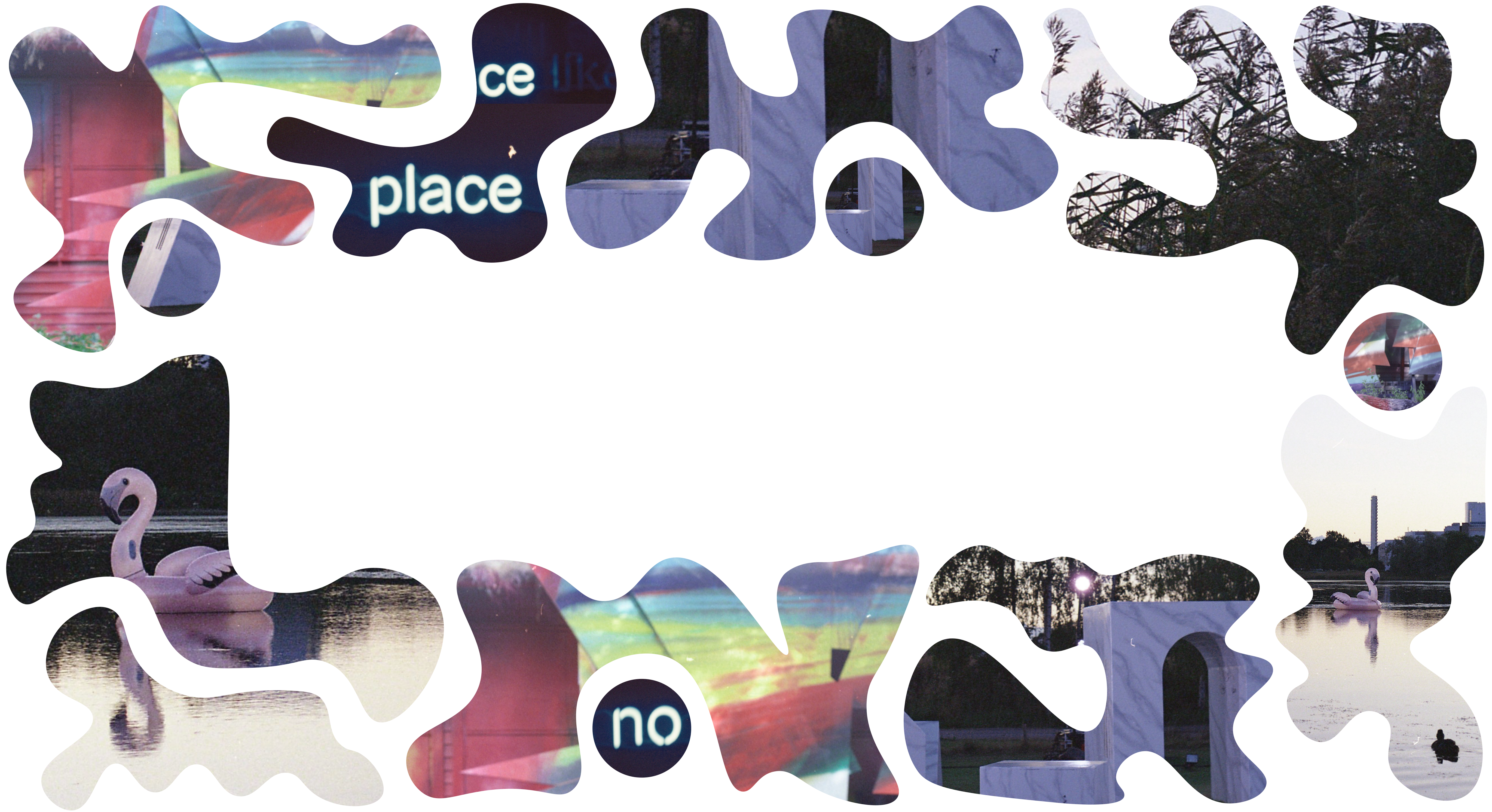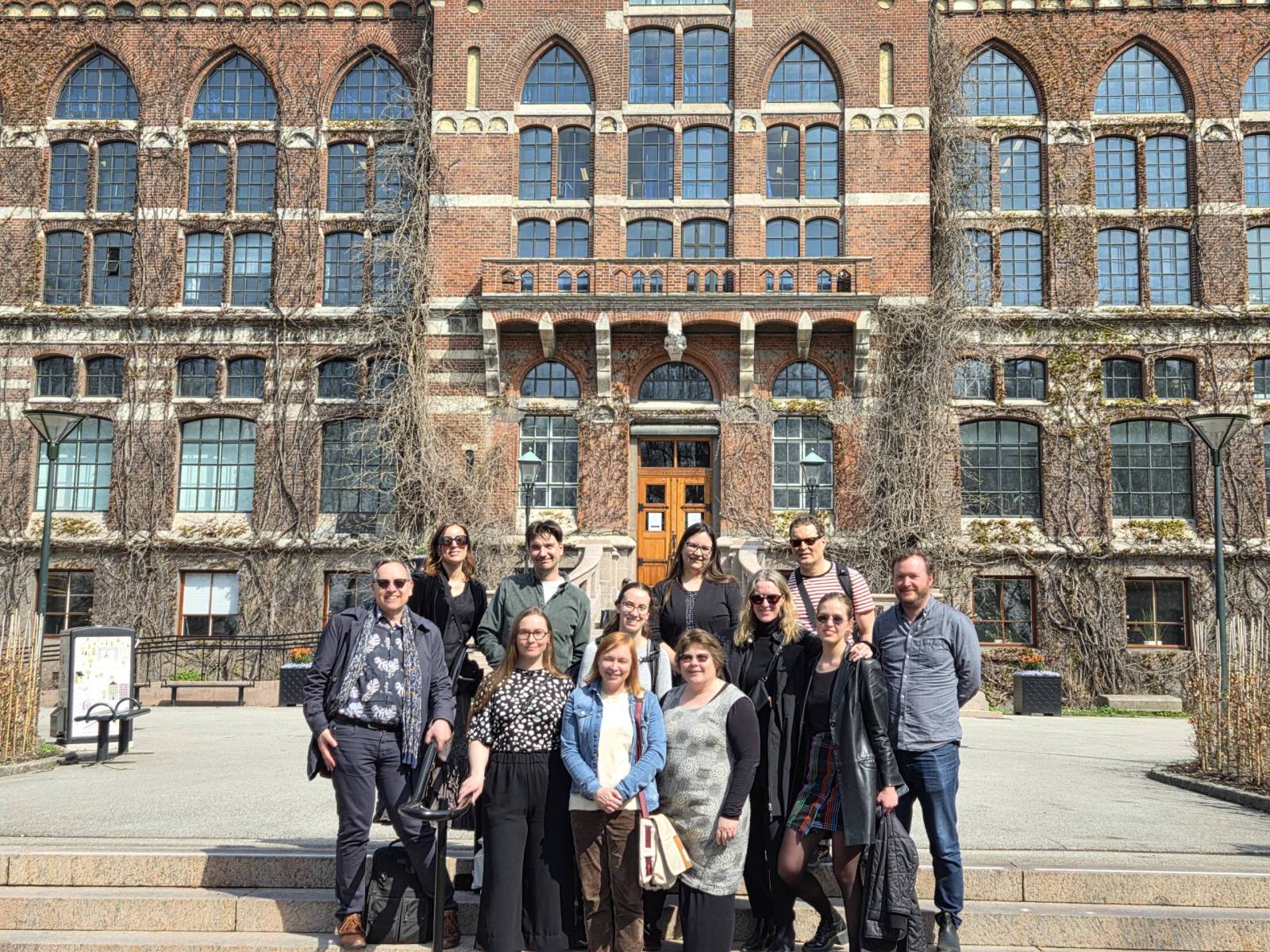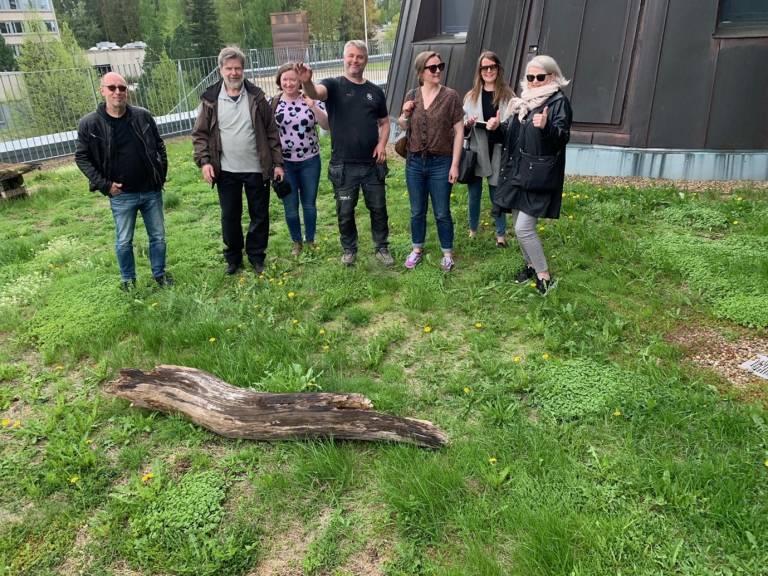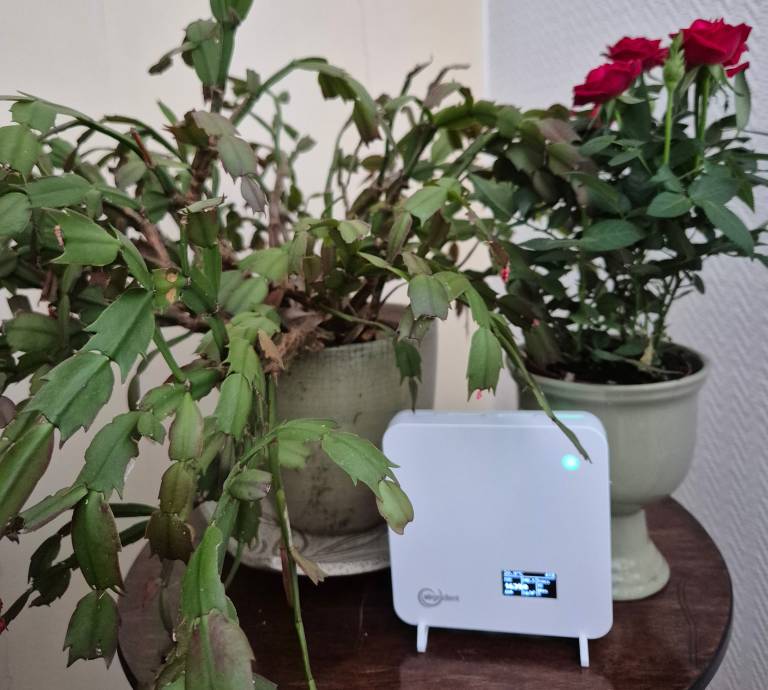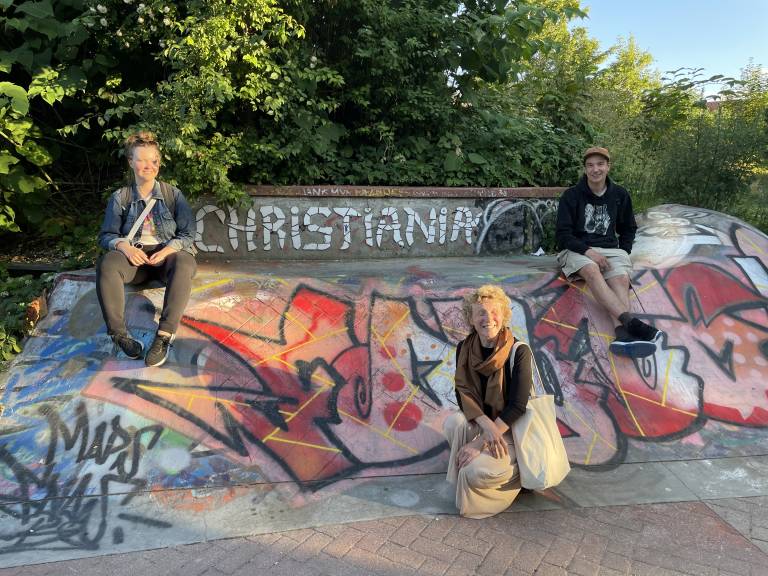For a long time, urban sustainability has been a central research theme in Tampere University. As we look to the future, it is time to envision the next steps for the research in that field in Tampere. To work towards that, a group of 12 members from the Tampere Urban Research Community, including STUE, TURNS and SUD, set out on a capacity-building visit. We wanted to get to know better Nordic institutions doing research on urban sustainability, so we headed towards Sweden and Denmark. For most of us the journey began with a ferry ride to Sweden, offering a perfect opportunity to discuss our research community in Tampere while enjoying the Archipelago scenery. We shared ideas about the future of urban sustainability research in Tampere, strengthening the collaborations inside our community. The future looks bright with all our insightful researchers!
After Swedish trains had given us a bit to worry about, we made it to The Institute for Urban Research in Malmö University. This institute, much like our community, is rooted in multidisciplinarity. Their core research themes include global urbanism, green and just cities, housing and welfare, and urban humanities. Engaging conversations about how they have built the institute and decided their core themes helped us to envision the future of urban sustainability research in Tampere. In addition, exciting future collaborations were planned. The evening concluded with a delicious dinner with our hosts, and we from Finland got to experience a little bit of spring by seeing all the blooming trees.

The next day, we headed to Denmark and Copenhagen, where part of our group got to admire the historic university buildings when we visited Green Solutions Centre of Copenhagen University. This Centre unites various disciplines to create research-based solutions addressing environmental crises. Living labs are central part of the Centre. They are user-oriented real-life situations and environments where researchers and different stakeholders, citizens and cities, for example, can create common solutions. Given that the SUD Bachelor’s program in Tampere utilizes living labs in their courses, this visit was particularly interesting for us. We discussed that the idea of learning by doing in living labs is very important as the collaboration among diverse stakeholders fosters innovative and creative solutions for urban sustainable development. Students from Tampere University and Copenhagen University might also soon meet since we planned future collaborations regarding teaching and student exchange. After the meeting, we enjoyed delicious Danish sandwiches and spent time walking through the university garden, enjoying this green space in the middle of Copenhagen.
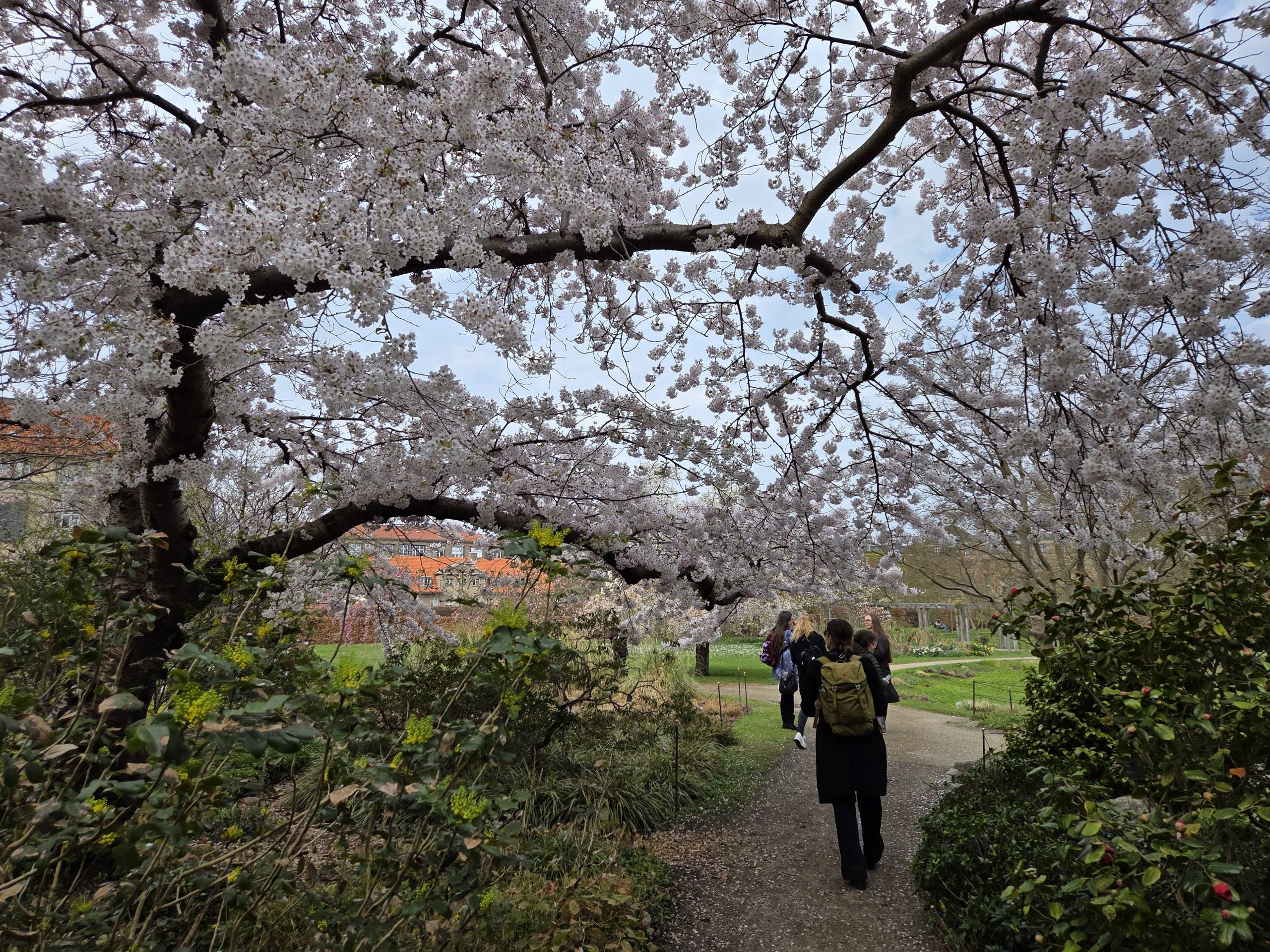
Another part of our group had the opportunity to visit Aalborg University in Copenhagen, where we met with a member of Division of Sustainability of Buildings. Their research on the sustainability assessment of buildings aligns especially with the interests of the architects and more technically oriented members of our team. During our visit, we discussed future collaborations considering Horizon Europe fundings, for example. In the afternoon, we visited European Environment Agency just by the picturesque Nyhavn houses. This agency of European Union collects data on environment topics from its member states and produces analyses to inform citizens and policymakers. In our meeting we heard especially about urban sustainability and multi-level governance highlighting how cities can contribute to sustainability transformation alongside national and EU stakeholders.
During our time in Copenhagen, we also had time to explore Freetown Christiania, an autonomous commune within the city. A local guide shared the history and the current state of the area while we walked around. Christiania faces some tensions when the city is developed; carless area may soon have cars since new public housing plans include parking slots for the new buildings. While we visited the place, it appeared calm, and the colours of street art shined in the sun. Our night ended in a local restaurant having dinner.

Our final destination was Lund University on the next day. There we learned about Climate-neutral Cities 2030 – Open Academy initiative supporting Malmö, Helsingborg, and Lund in reaching their goal of climate-neutrality by 2030. This is an interesting example of collaboration between cities and academy. We also got to know about Circular Building Sector, a profile area in Lund University, which fosters collaboration between industry and university researchers to develop circular solutions for sustainable energy use and carbon impact in urban buildings. We shared our experiences working with stakeholders outside university and also multidisciplinary groups within the university. In addition, an important topic for our discussions was to vision how to help teachers from different fields to twist their courses integrating sustainability since it should be part of every course in this era of socio-environmental crises. The visit included a tour of lab facilities showcasing concrete ideas for circular building, which were particularly intriguing for our social scientists seldom visiting those kinds of environments. The beautiful university campus tour, guided by a former colleague from Tampere University, was a great end to our visit.

Overall, our visit provided valuable insights for practices to strengthen the urban research community in Tampere. It was also an excellent opportunity to share our expertise and form new collaborations with Nordic urban researchers. The visit gave us an understanding about how we compare to other urban sustainability research units and showed that we are internationally a successful community. The visit allowed us to connect more closely with each other, ensuring a stronger Tampere Urban Research Community moving forward. Exciting times lie ahead for urban sustainability research in Tampere!
Next, as a community, we will work on planning on specific themes our research is going to focus on. First meeting regarding this will be held on Thursday October 9th at 12-16 in Tampere. If you are a part of Tampere Urban Research community or you would like to be, please follow our channels for more specific information and come to develop our research and community together in October.
This capacity-building visit was supported by STUE and TURNS.
Oona Kallio studies social policy at Tampere University. She has worked as an intern for STUE during the spring of 2025. She had the opportunity to help organize this capacity-building visit and to participate in it.

